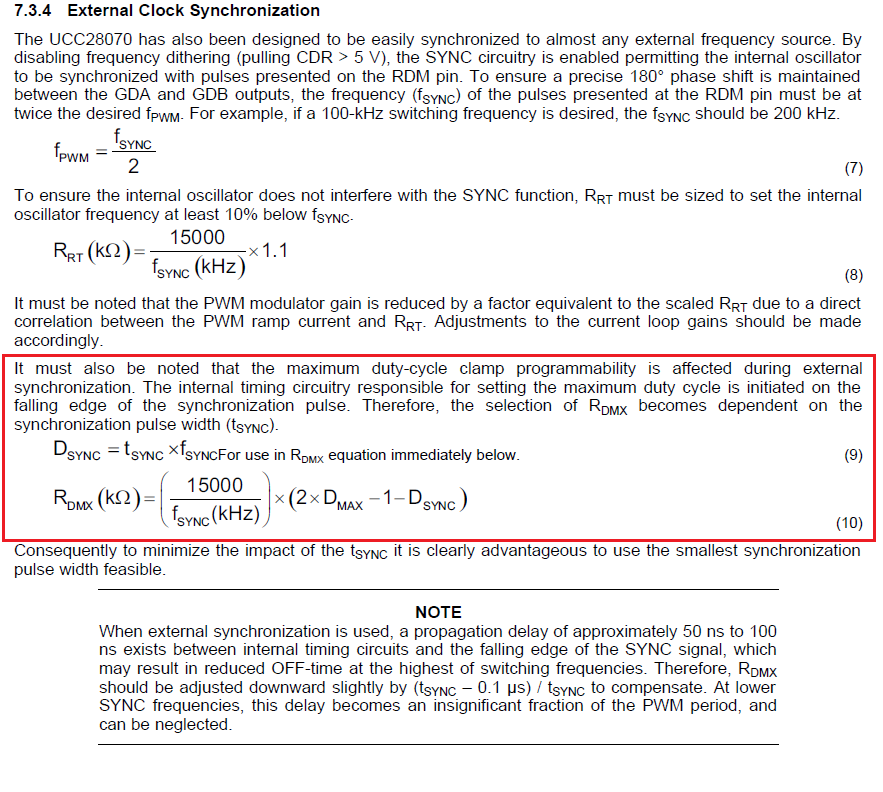Other Parts Discussed in Thread: UCC28070, ISO7710, UCC28951
Hi,
I am thinking about how to synchronize UCC28950 and UCC28070.
The master is UCC28950. The slave is UCC28070.
The synchronous clock is 100kHz.
I thought of using a digital isolator to connect the clocks of both devices.
The device is ISO7710. Is it possible to use this device?
Also, please let me know if you have any other good products.
If you have a reference design that synchronizes UCC28950 and UCC28070, please let me know.
Best regards,


